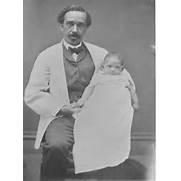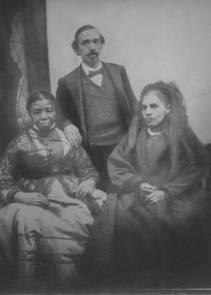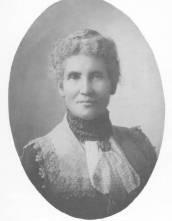Peter Hudlin’s Underground Railroad Station
The House of Hudlin
My Family History
My success is built on an incredible history of heroes who have achieved great things in the face of oppression. This is the first of a series of posts about the Hudlin family.
I could not tell this story without the extraordinary efforts of my uncle, Richard Hudlin, who tirelessly researched our family history long before it was cool to search out one’s roots. Most of what I will be recounting is based on his research and writing.
Peter Hudlin’s Underground Railroad Station
by Dr. Richard A. Hudlin, Senior Fellow, Center for Historical Research
The “underground railroad” may be defined as those individuals and groups who helped slaves escape to freedom, as well as the routes and “safe houses.” Its “railroad lines” were the paths from one “safe house” to another. At “stations,” runaways ate and rested. “Maroons” were communities of fugitive slaves, usually in remote areas, where swamps, mountains, and other features made it too difficult or costly to capture them. Others stayed in urban areas, even in slave states, sometimes with forged documents certifying that they were free.
“Conductors” escorted the fugitive slaves. Most conductors were slaves or free Africans or African-Americans. Conductors used passwords, signals, signs, and codes to minimize the chances of being discovered. Discovery was likely to mean facing a mob who would torture then kill a conductor.
Owen Lovejoy (1811-1864) was a rare exception, who proclaimed from his pulpit in Princeton, Illinois and from his seat in the United States Congress that he helped fugitive slaves. The “Lovejoy Line” was one of the escape routes used by underground railroad conductor Peter Hudlin.
There is a considerable body of literature on the underground railroad, but to the best of my knowledge few sites have been documented in St. Louis. My great-great-great-great grandfather ran one of them.
Peter Hudlin was born in Virginia in 1828. His wife, a Cherokee born Nancy Jane Rutledge, was born in Kentucky in 1833. According to the Hudlin Family oral history and other sources, great-grandfather Peter Hudlin was a conductor on the underground railroad. For example, in 1976 Josephine Lockhart wrote:
The human cargo would arrive at Peter’s home in crates. He would uncrate the run-away slaves, feed them and provide space for them to rest in his basement until nightfall. He would then recrate them and under cover of darkness, load the crates onto a wagon and drive across the river to one of the two major underground routes northward near Alton, Illinois.
For many people, it is not easy to understand why Peter and Nancy would risk their lives and the lives and property of their family to help strangers they had never seen before and would never see again. They did not tell fugitives their names, address, or anything about themselves for fear the fugitives would captured, tortured, and forced to give them up, as well as other conductors. They could not brag about it to friends or relatives lest they be discovered. They accepted nothing from the fugitives, who generally had little or nothing to pay with, and they spent their money feeding and caring for them. Their motivation was neither fame, fortune, or any other motives which drive most Americans. This was unselfish love for fellow human beings. It has been written:
“Greater love hath no man than this, that a man lay down his life for his friends.”
Peter and Nancy were willing to lay down their lives for total strangers. Think about it!
At any moment, Peter could have been betrayed by fellow underground railroad conductors, either by the fugitive slaves he and his wife helped, or by others who even suspected that they helped fugitives. If the mob came for Peter, how far would their blood lust take them? Would their viciousness be limited to Peter, or would it include his family and associates? Peter had to function day in and day out for years, never knowing when the mob might come for him. How did he manage to cope with this possibility? This is another thing to think about!
These considerations and others explain why the number of conductors was relatively small compared to the total number of people who felt that the institution of slavery was unjust. In other words, many people wanted to help, but they were afraid to.
Other Aspects of Peter’s Life
At various times, it was unlawful in St. Louis to teach people of African ancestry to read or write. Peter’s eldest daughter, Sarah, attended “prayer meetings” where someone kept watch for strangers. When a stranger headed their way, the reading and writing materials were put out of sight, and the stranger saw only religious instruction.
Peter Hudlin was living in St. Louis when the Supreme Court ruled on the “Dred Scott” case. The ruling by the five slave-owners serving on the Supreme Court and two others who supported them demonstrated that the Supreme Court would do anything it could to protect slavery, including declaring unconstitutional any acts of Congress which might have the effect of limiting and eventually abolishing chattel slavery. Peter was left with no hope that the United States government would play any role in eventually ending slavery as long as slave owners controlled the Supreme Court. Many people who shared Peter’s sense of justice used their energy and efforts to cripple and eventually help put an end to the institution of slavery.
Peter Hudlin joined the Knights of Tabor, a secret society that included a separate and even more secretive inner circle that planned, organized, and prepared to end chattel slavery by force of arms. The first battle of the guerilla war was planned for Atlanta, Georgia. John Brown’s raid and the subsequent public reaction led to the raid being postponed. The cancelation of this effort was also attributed to the recruiting of African-Americans and others opposed to slavery for enlistment in the Union Army. Mr. Hiram Revels (who would later become the first African-American Congressman from Mississippi) organized a regiment in St. Louis when Peter’s son, Richard A. Hudlin (1858-1918), was five years old.
Aside from treason, aiding and abetting fugitive slaves, and aiding and abetting African-American literacy, Peter and Nancy were law abiding, ethical, and moral. He took care to admonish his children whenever they engaged in unprincipled behavior.
No one who asked for food was ever turned away. I suspect that hobos placed some mark on his premises so that other hobos would know that the Hudlins would feed anyone.
In Peter’s day, African-Americans were generally denied public accommodations in St. Louis, so travelers stayed in people’s homes. Many famous people were frequent guests at his home, as well as his brother Joseph’s home in Chicago, including Frederick Douglas, who was the undisputed leader of African-Americans at home and abroad. Guests at his home included people who could share their knowledge of the arts and sciences with his family, and his family visited people with knowledge and skills. He would take his family to the educational and cultural events permitted to African-Americans in and near St. Louis.
Peter Hudlin was kind, loving, unselfish, thoughtful, honest, trustworthy, generous, courageous, determined, spiritual, and had a lifelong zeal for learning and education, though I am not sure whether he ever learned to read and write. Note that the deeds of trust had the “mark” rather than the signature of Peter and Nancy.
Peter’s devotion to education is further revealed by the fact that his son, Richard A. Hudlin, was one of the small number of Americans of African or native American ancestry who graduated from a “white” college in that era.
Peter Hudlin’s Brothers
Peter, Samuel and Joseph Hudlin were slaves on a plantation in Virginia. Samuel Hudlin made friends with the captain of a ship who smuggled him on board in a barrel and dropped him off in New Brunswick, Canada. He settled there, bought land, and raised a family. Canada had abolished slavery before Samuel arrived, so he was safe there. He also earned enough money to send for some of his family members, which had to be done discretely and diplomatically since many Canadians were hostile to people of African descent coming to Canada.
Thanks to the compassion of their owner, Peter Hudlin and a least one of his brothers, Joseph, were allowed to keep some of the money they earned.
Joseph Hudlin left with his earnings, without buying his freedom, and settled in Chicago in 1854. At that time, there were many free African-Americans, and the climate of opinion was such that he was relatively safe from capture and return to slavery. Joseph was also a conductor on the underground railroad and his house was one of the Chicago underground railroad stations where fugitive slaves ate, rested, and prepared for a life in Chicago, a trip to Canada (sometimes on a ship sailing from Chicago), or a trip elsewhere.
Peter Hudlin used some of his earnings to buy his freedom and left Virginia. He met his future wife in Kentucky, and from there, he visited his brother Joseph in Chicago. It is possible that some of the fugitives Peter Hudlin drove into Illinois stopped at Joseph’s house in Chicago. Peter eventually settled in St. Louis, hoping that the papers documenting his freedom would save him from being seized, illegally declared a runaway slave, and enslaved. Were this to happen, the person who seized Peter would be likely to declare such papers forgeries, or simply them. Only a contrary statement by a European-American would be likely to be credible confirmation that Peter was free.



